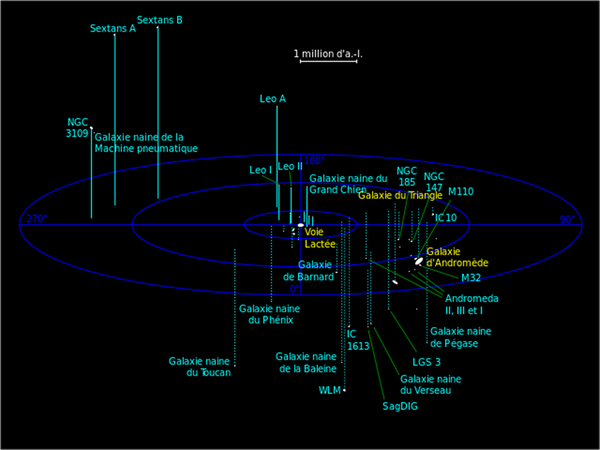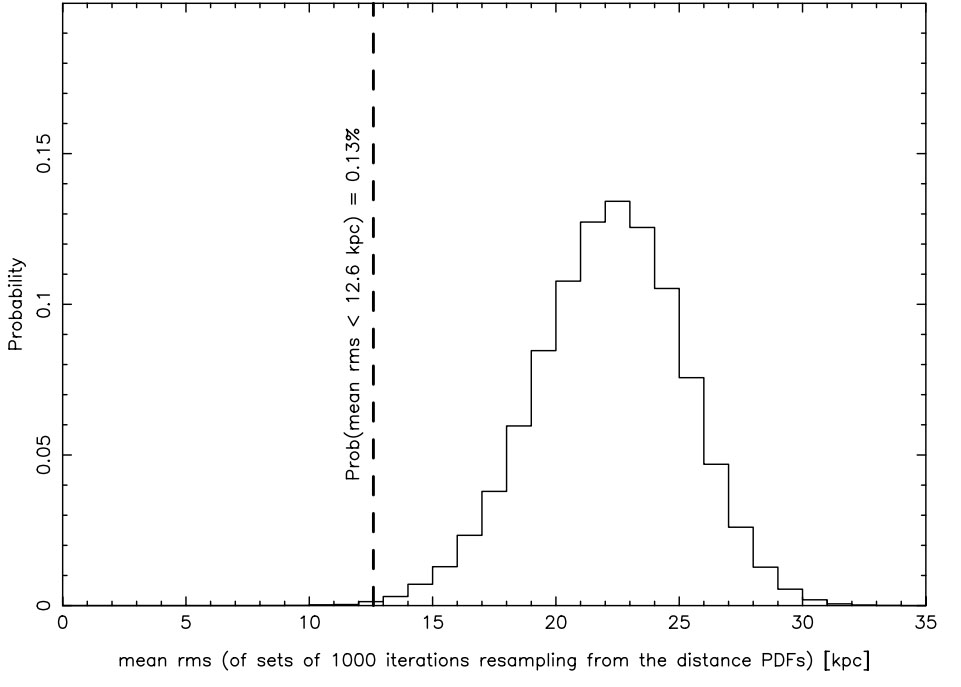
A 15-year-old's model has reignited the debate on Coplanar Galaxies (located on the same plane).
The coplanar organization of Andromeda's (M31) satellite galaxies challenges current models of galactic and cosmological formation, as it presents an ordered and flattened structure that does not match the predictions of the standard cosmological model, the ΛCDM (Lambda-Cold Dark Matter) model.
Galaxies form within dark matter halos distributed in a quasi-spherical manner. Satellite galaxies are supposed to form randomly within these halos and should therefore be distributed isotropically around the central galaxy. Their spatial distribution and kinematics (velocities, angular momenta) should be disordered, resulting from a stochastic accretion history of subhalos.
The large Andromeda galaxy and our Galaxy (Milky Way) are the two most important galaxies in the Local Group, which themselves have satellite galaxies. The two giant spirals belong to an even larger grouping of at least 20 galaxies including M31, M33, Maffei I and Maffei II, the Large and Small Magellanic Clouds; the whole is called the Local Group. All these galaxies apparently move around a common center located between our Galaxy and the Andromeda galaxy.
By modeling the rotations of galaxies around Andromeda, Neil Ibata, a 15-year-old high school student from Strasbourg in 2013, questions the random distribution of galaxies in space. About twenty dwarf galaxies orbit the Andromeda galaxy. The most massive is the Triangulum spiral galaxy, but M110 and M32 are often visible in overall images of the Andromeda galaxy.
A study published in 2006 indicates that a set of satellite galaxies are coplanar, i.e., located on the same plane passing through the center of the Andromeda galaxy. However, Andromeda II, NGC 185, and M110 deviate significantly from it. This coplanar distribution of galaxies remains an enigma.
Scientists have wondered what the probability is for randomly arranged galaxies to form a flat structure around the Andromeda galaxy. In 2012, Neil Ibata, at the request of his astrophysicist father, developed a model on the movements of Andromeda's dwarf galaxies. "I had just completed an internship to learn the Python programming language. My father suggested that I put into practice what I had learned to visualize data that he had been collecting for several years with his team on the Andromeda galaxy."
His father Rodrigo Ibata (1967-), an English astrophysicist at the Strasbourg Observatory, and his team analyzed the results. The scientific discovery published on January 3, 2013, in the British magazine Nature is important because it challenges existing theories on dark matter and galaxy formation. This young man's model shows that the observed spatial alignment of dwarf galaxies is very unlikely to be a random coincidence.

Giant spiral galaxies are assembled from small systems through a process known as hierarchical classification. Orbiting these giants are dwarf galaxies that are probably the remnants of galactic ancestors. Recent studies on the Milky Way's dwarf galaxies have led some astronomers to believe that their orbits are not randomly distributed. This suspicion, which challenges current theories on galaxy formation, is now reinforced by the discovery of a plane of dwarf galaxies orbiting as a coherent whole around the Andromeda galaxy. The structure is extremely thin but contains about half of the dwarf galaxies in the Andromeda system.
Rodrigo Ibata and his team report that 13 of the 15 satellites in the plane share the same direction of rotation.